formerly eScholarship Editions


|
|
|
|
Your search for
'Evolution' in subject
found 6 book(s). | Modify Search | Displaying 1 - 6 of 6 book(s) | |
| 1. | 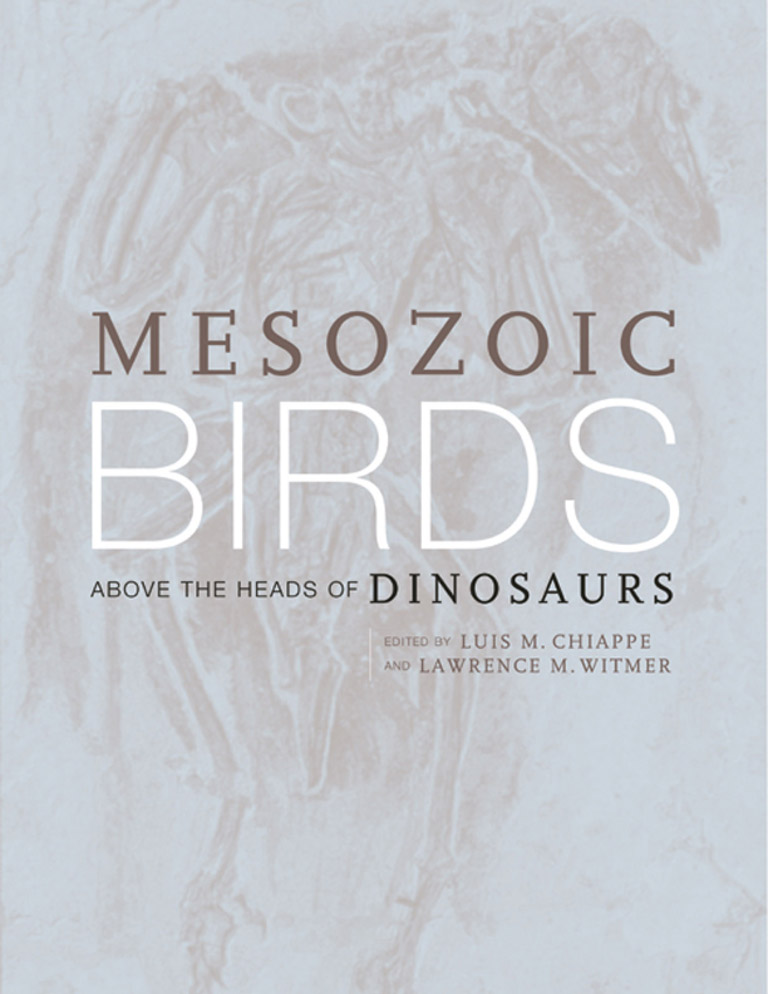 | Title: Mesozoic birds: above the heads of dinosaurs Author: Chiappe, Luis M Published: University of California Press, 2002 Subjects: Organismal Biology | Ornithology | Paleontology | Evolution Publisher's Description: Our knowledge of the origin and early evolution of birds has exploded in the past ten to fifteen years. In the 1990s alone, scientists became aware of approximately three times more species of early birds than were previously known, marking the first 85 million years of avian development as a period of remarkable species diversity. Assembling work by an international group of renowned scientists, Mesozoic Birds: Above the Heads of Dinosaurs is the most authoritative and up-to-date source on early avian evolution currently available. This unique resource provides a comprehensive examination of the known fossil record and is also an unparalleled guide to the fast-paced developments in current research. Mesozoic Birds: Above the Heads of Dinosaurs covers a wide range of topics, including discussions of avian origins, the fossil record of feathers and footprints, bone histology, and locomotor evolution. Controversial taxa such as Protoavis, Caudipteryx, and Mononykus receive special treatment. But the heart of the volume presents the anatomy, relationships, and paleobiology of the undisputed Mesozoic aviary. Some of the book's most exciting features are the new definitive descriptions and illustrations of taxa that previously have received only brief notice, such as the alvarezsaurid Shuvuuia; the enantiornithines Sinornis; Eoalulavis, Vorona, and Patagopteryx; and the hesperornithiform Enaliornis. The origin of birds and their relationship to dinosaurs continue to be hotly debated among paleontologists, ornithologists, and evolutionary biologists. This cutting-edge reference will become an essential resource for those interested in this debate and in the many other fascinating topics relating to the evolution of the earliest known birds. [brief] Similar Items |
| 2. | 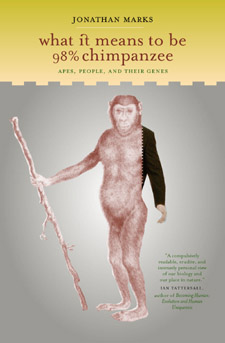 | Title: What it means to be 98% chimpanzee: apes, people, and their genes Author: Marks, Jonathan (Jonathan M.) 1955- Published: University of California Press, 2002 Subjects: EcologyEvolutionEnvironment | Evolution | Physical Anthropology | Sociology | Medicine | Mammalogy Publisher's Description: The overwhelming similarity of human and ape genes is one of the best-known facts of modern genetic sciencenm. But what does this similarity mean? Does it, as many have suggested, have profound implications for understanding human nature? Well-known molecular anthropologist Jonathan Marks uses the human-versus-ape controversy as a jumping-off point for a radical reassessment of a range of provocative issues--from the role of science in society to racism, animal rights, and cloning. Full of interesting facts, fascinating personalities, and vivid examples that capture times and places, this work explains and demystifies human genetic science--showing ultimately how it has always been subject to social and political influences and teaching us how to think critically about its modern findings. Marks presents the field of molecular anthropology--a synthesis of the holistic approach of anthropology with the reductive approach of molecular genetics--as a way of improving our understanding of the science of human evolution. As he explores the intellectual terrain of this field, he lays out its broad areas of interest with issues ranging from the differences between apes and humans to the biological and behavioral variations expressed in humans as a species. Marks confronts head-on the problems of racial classification in science. He describes current theories about race and uses work in primatology, comparative anatomy, and molecular anthropology to debunk them. He also sheds new light on the controversial Great Ape Project, the Human Genome Diversity Project, and much more. This iconoclastic, witty, and extremely readable book illuminates the deep background of human variation and asks us to reconsider the role of science in modern society. [brief] Similar Items |
| 3. | 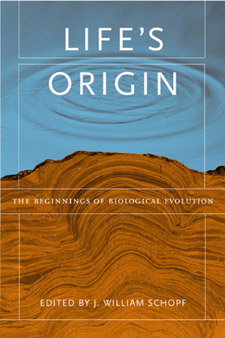 | Title: Life's origin: the beginnings of biological evolution Author: Schopf, J. William 1941- Published: University of California Press, 2002 Subjects: Organismal Biology | Paleontology | Astronomy | Evolution | Earth Sciences | Physical Sciences Publisher's Description: Always a controversial and compelling topic, the origin of life on Earth was considered taboo as an area of inquiry for science as recently as the 1950s. Since then, however, scientists working in this area have made remarkable progress, and an overall picture of how life emerged is coming more clearly into focus. We now know, for example, that the story of life's origin begins not on Earth, but in the interiors of distant stars. This book brings a summary of current research and ideas on life's origin to a wide audience. The contributors, all of whom received the Oparin/Urey Gold Medal of the International Society for the Study of the Origin of Life, are luminaries in the fields of chemistry, paleobiology, and astrobiology, and in these chapters they discuss their life's work: understanding the what, when, and how of the early evolution of life on Earth. Presented in nontechnical language and including a useful glossary of scientific terms, Life's Origin gives a state-of-the-art encapsulation of the fascinating work now being done by scientists as they begin to characterize life as a natural outcome of the evolution of cosmic matter. [brief] Similar Items |
| 4. | 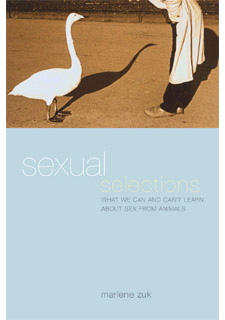 | Title: Sexual selections: what we can and can't learn about sex from animals Author: Zuk, M. (Marlene) Published: University of California Press, 2002 Subjects: Organismal Biology | Cultural Anthropology | Evolution | Gender Studies | Animal Behavior | Sociology | Biology Publisher's Description: Scientific discoveries about the animal kingdom fuel ideological battles on many fronts, especially battles about sex and gender. We now know that male marmosets help take care of their offspring. Is this heartening news for today's stay-at-home dads? Recent studies show that many female birds once thought to be monogamous actually have chicks that are fathered outside the primary breeding pair. Does this information spell doom for traditional marriages? And bonobo apes take part in female-female sexual encounters. Does this mean that human homosexuality is natural? This highly provocative book clearly shows that these are the wrong kinds of questions to ask about animal behavior. Marlene Zuk, a respected biologist and a feminist, gives an eye-opening tour of some of the latest developments in our knowledge of animal sexuality and evolutionary biology. Sexual Selections exposes the anthropomorphism and gender politics that have colored our understanding of the natural world and shows how feminism can help move us away from our ideological biases. As she tells many amazing stories about animal behavior--whether of birds and apes or of rats and cockroaches--Zuk takes us to the places where our ideas about nature, gender, and culture collide. Writing in an engaging, conversational style, she discusses such politically charged topics as motherhood, the genetic basis for adultery, the female orgasm, menstruation, and homosexuality. She shows how feminism can give us the tools to examine sensitive issues such as these and to enhance our understanding of the natural world if we avoid using research to champion a feminist agenda and avoid using animals as ideological weapons. Zuk passionately asks us to learn to see the animal world on its own terms, with its splendid array of diversity and variation. This knowledge will give us a better understanding of animals and can ultimately change our assumptions about what is natural, normal, and even possible. [brief] Similar Items |
| 5. | 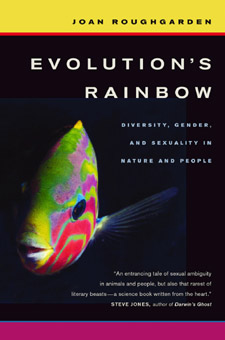 | Title: Evolution's rainbow: diversity, gender, and sexuality in nature and people Author: Roughgarden, Joan Published: University of California Press, 2004 Subjects: Gender Studies | EcologyEvolutionEnvironment | Anthropology | Evolution | Health Care | Social Problems | GayLesbian and Bisexual Studies | Social Problems Publisher's Description: In this innovative celebration of diversity and affirmation of individuality in animals and humans, Joan Roughgarden challenges accepted wisdom about gender identity and sexual orientation. A distinguished evolutionary biologist, Roughgarden takes on the medical establishment, the Bible, social science - and even Darwin himself. She leads the reader through a fascinating discussion of diversity in gender and sexuality among fish, reptiles, amphibians, birds, and mammals, including primates. Evolution's Rainbow explains how this diversity develops from the action of genes and hormones and how people come to differ from each other in all aspects of body and behavior. Roughgarden reconstructs primary science in light of feminist, gay, and transgender criticism and redefines our understanding of sex, gender, and sexuality. Witty, playful, and daring, this book will revolutionize our understanding of sexuality. Roughgarden argues that principal elements of Darwinian sexual selection theory are false and suggests a new theory that emphasizes social inclusion and control of access to resources and mating opportunity. She disputes a range of scientific and medical concepts, including Wilson's genetic determinism of behavior, evolutionary psychology, the existence of a gay gene, the role of parenting in determining gender identity, and Dawkins's "selfish gene" as the driver of natural selection. She dares social science to respect the agency and rationality of diverse people; shows that many cultures across the world and throughout history accommodate people we label today as lesbian, gay, and transgendered; and calls on the Christian religion to acknowledge the Bible's many passages endorsing diversity in gender and sexuality. Evolution's Rainbow concludes with bold recommendations for improving education in biology, psychology, and medicine; for democratizing genetic engineering and medical practice; and for building a public monument to affirm diversity as one of our nation's defining principles. [brief] Similar Items |
| 6. | 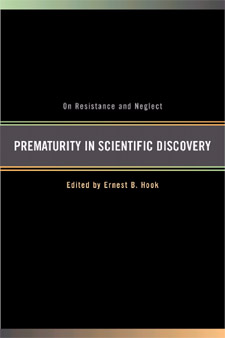 | Title: Prematurity in scientific discovery: on resistance and neglect Author: Hook, Ernest B 1936- Published: University of California Press, 2002 Subjects: Science | History of Science | Social and Political Thought | Geology | Evolution | Physics | History of Medicine Publisher's Description: For centuries, observers have noted the many obstacles to intellectual change in science. In a much-discussed paper published in Scientific American in 1972, molecular biologist Gunther Stent proposed an explicit criterion for one kind of obstacle to scientific discovery. He denoted a claim or hypothesis as "premature" if its implications cannot be connected to canonical knowledge by a simple series of logical steps. Further, Stent suggested that it was appropriate for the scientific community to ignore such hypotheses so that it would not be overwhelmed by vast numbers of false leads. In this volume, eminent scientists, physicians, historians, social scientists, and philosophers respond to Stent's thesis. [brief] Similar Items |